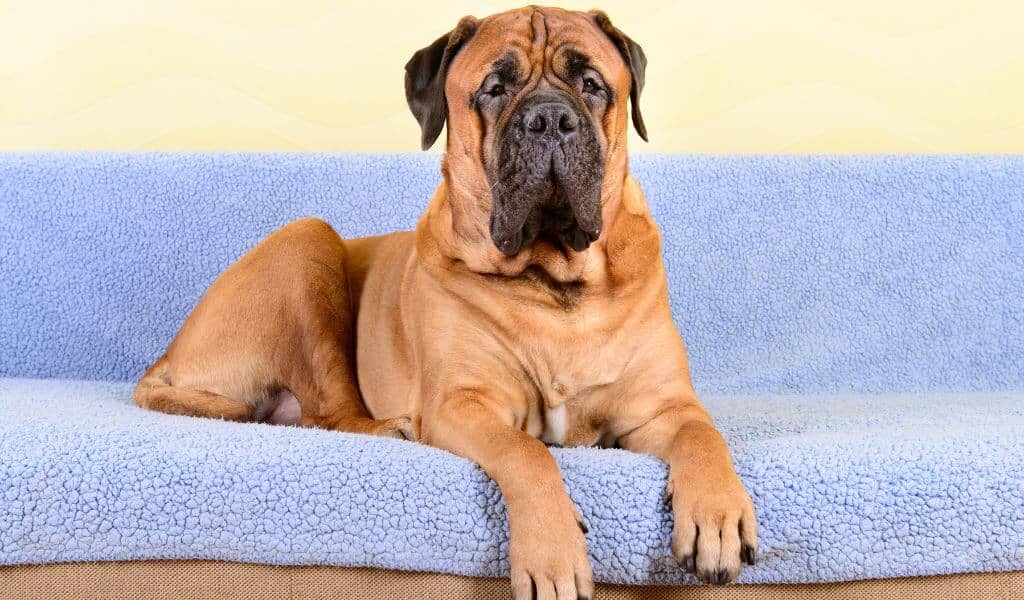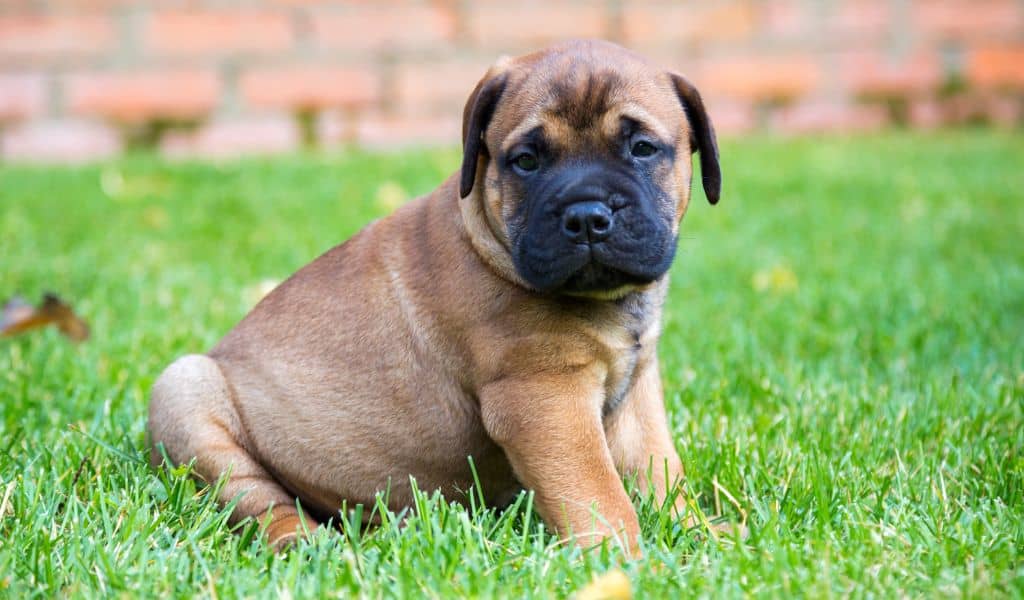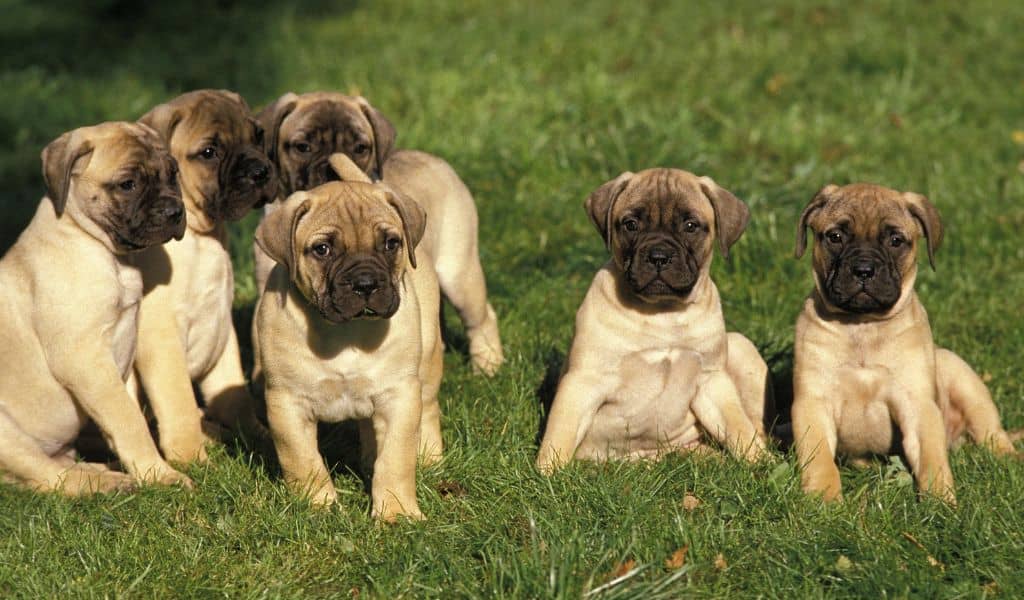Bullmastiff is a large-boned, powerful dog with a short coat from England. Its look shows its origins as a mix between the Mastiff and the bulldog. This breed is intelligent, attentive, and loyal. Despite having an inherent protective instinct, the Bullmastiff Dog Breed is usually extremely gentle towards children.
- History
- Breed overview
- Appearance and Characteristics
- Personality and Temperament
- Health
- How to take care
- Training
- Advantages & Disadvantages
- Images
History
Bullmastiffs, sometimes known as the “Gamekeeper’s Night Dog,” were originated in the mid-1880s in England to assist gamekeepers on big country estates struggled to keep poachers from stealing.
It was developed as a guard dog in the 19th century by combining the English Mastiff with the now-extinct Old English Bulldog. In 1924, The Kennel Club recognized it as a breed.
The breed origins of the Bullmastiff are unclear. In some parts of England in the 18th century, the Old English Mastiff and English Bulldog are commonly crossbred to produce dogs suitable for guarding people and their property. By the early twentieth century, this cross-breed was widely used as a tool to help gamekeepers control poaching.
Gamekeepers used a cross of the heavy, rough, , and aggressive Bulldog of the 19th century with the massive, powerful and less aggressive Mastiff to breed them for strength, size, and speed.
Breed overview
Group: Working
Height: 24 to 27 inches
Weight: 100 to 130 pounds
Coat: Short and weather resistant
Coat color: red, or brindle with accents of black
Temperament: Loyal, protected, alert, loving, and calm
Hypoallergenic: no
Other name: Gamekeeper’s Night Dog.
Origin: England
Life span: 8 to 10 years
Appearance and Characteristics
The Bullmastiff is a large and long dog. This Bullmastiff female stand some 61–66 cm at the and usually weigh 41–50 kg on average, male dogs stand about 3 cm taller and weigh 9 kg more. The bullmastiff dogs coat can be any shade of fawn, red, or brindle, The muzzle is black and turning whiter towards the eyes.
Characteristics
Bullmastiffs, despite their menacing look, are a calm, cool, and collected breed. They desire human connection and will be very loyal to their owners and family, desiring to always be by their side. They grow with rigorous training and are frequently considered to be gentle and kind.
| Trainability | medium |
| Friendliness | High |
| Kid-Friendly | High |
| Pet-Friendly | High |
| Exercise Needs | Medium |
| Playfulness | High |
| Energy Level | Low to moderate |
| affection level | High |
| Intelligence | Medium |
| Tendency to Bark | Medium |
| Amount of Shedding | Low |
| Snore | high |
| Attention needs | moderate |
| Overall grooming needs | moderate |
Personality and Temperament
Personality
He may be a free thinker, which might make training challenging. Despite his love to his family, the bullmastiff is no pushover. He may also be less tolerant of animal family members than of human family members.
The perfect Bullmastiff is brave and confident, but also sensitive of their owners’ demands. They are intelligent and trustworthy. Bullmastiffs, like other dogs, require early socialization, which includes exposure to a wide range of people, sights, noises, and experiences.
Temperament
When it comes to family relations, Bullmastiffs are kind and loving. Their laid-back, easygoing personalities make them ideal for families with well-behaved youngsters. When a stranger enters the scene, the bullmastiff’s casual attitude toward family members is likely to alter.
Health
Bullmastiffs are usually healthy, although like with it all breeds, they are prone to some health issues. Although not all Bullmastiffs will get any or all of the ailments, it’s important to be aware of them but if you’re thinking about considering one.
Common health problems in this breed include elbow dysplasia, cancer, hip Dysplasia and, cruciate ligaments, bloat, subaortic stenosis, skin and coat problems, entropion and hypothyroidism etc.
How To care
The Bullmastiff is a low-energy dog that adapts well to most residential environments, however its size makes them ideally suited to a fenced-in yard. Because of their short muzzle, Bullmastiffs are prone to heat exhaustion and heatstroke.
Exercise should be avoided during the heat of the day, and they should be kept indoors during hot or humid environments. When they’re outside, make sure they have been accessibility to shade and fresh water at all times.
Grooming
Because of their short coat, bullmastiff are incredibly easy to groom. You should brush their coat regularly, which is simple due to their thin hairs. There will be no tangles, but you should brush them to ensure that the oils in their fur are uniformly dispersed.
Bathing and grooming are required regularly for the Bullmastiff. Depending on his activity level and lifestyle, this attentive and clever dog can be washed weekly to every six to eight weeks using a dog shampoo. Bathing is essential for this short and densely coated breed to decrease shedding and preserve healthy skin and hair.
Examining bullmastiff should be washed behind their eyes to reduce staining and keep infections at bay is equally crucial for bullmastiff ears. To avoid bad breath, you should clean their teeth once a day, or use chewable dental sticks.
Feeding
A Bullmastiff should be fed twice daily, with each meal containing 1 to 2 cups of dry food should be given depending on the size and activity level of pet. Always provide dog with fresh, clean water. Your dog’s demands will change over time, so consult with vet to create the best feeding regimen and food for dog.
The food that yours bullmastiff adult dog consumes is influenced by his size, age, shape, metabolism, and exercise levels. Their diet should include physically suitable proteins, fats, broken bones, and vegetables that are high in needed vitamins and nutrients.
Training
The Bullmastiff, like all dogs, requires proper training and socialization. Overall, this breed is intelligent yet independent, thus training will require rigorous constancy. Early on, curb any habit of jumping on people, since this might lead to a dangerous situation when the dog is fully grown.
Advantages & Disadvantages
Advantages:
- Excellent watchdogs
- Don’t need amount of exercise
- Has short hair that is easy to care.
- Big and powerful breed
- Barks only when needed
- Calm temperament
Disadvantages:
- Difficult to handle for children or adults.
- Aggression toward other animals and humans
- Attack dogs
- Considered dangerous by many
- Has a short lifespan of only 8 to 10 years
- Takes up a lot of room in your home and car
Images



